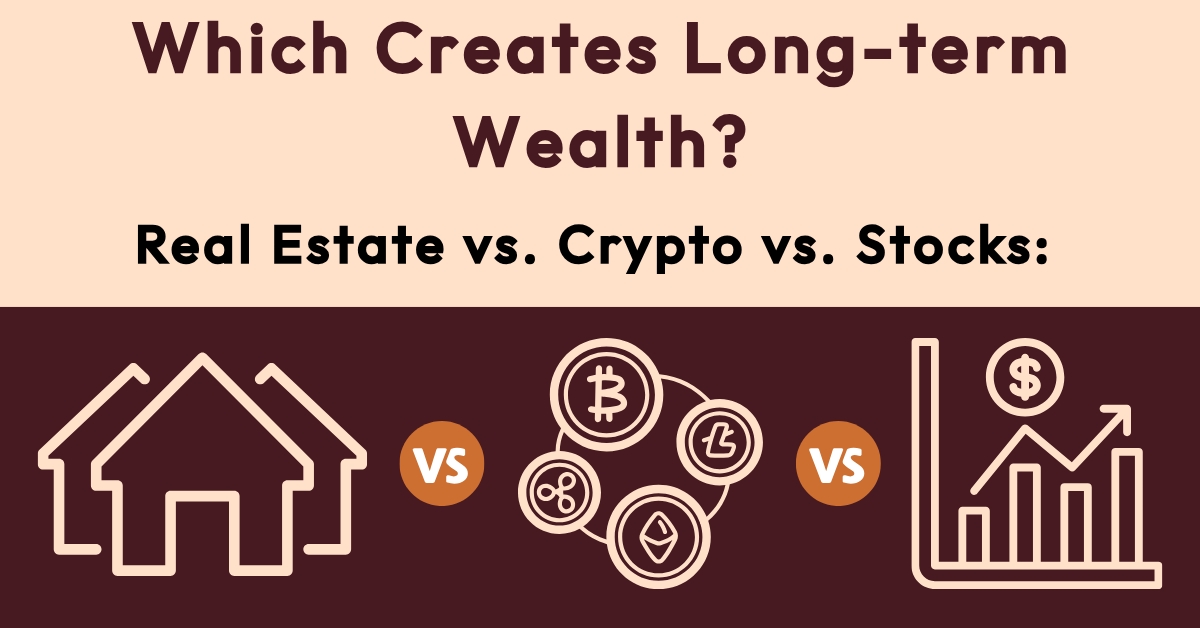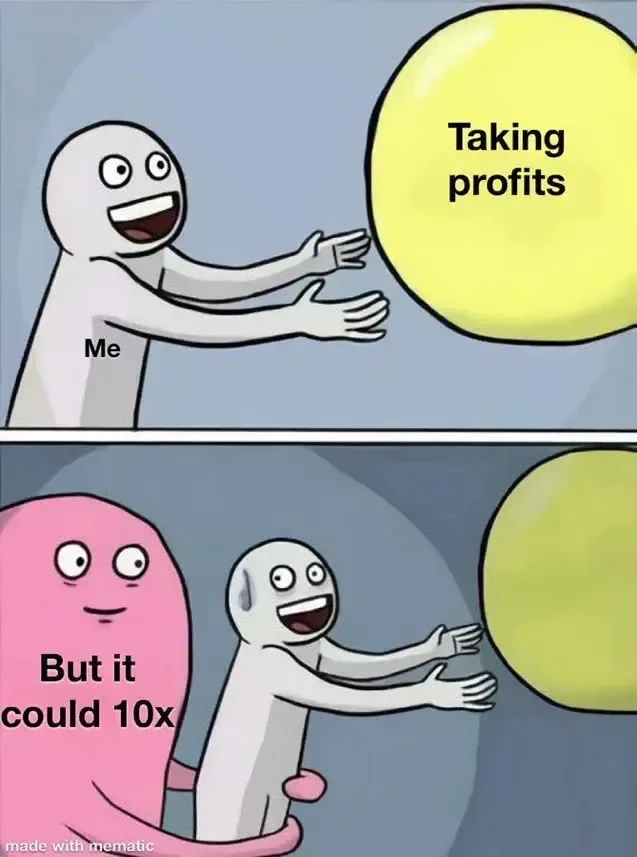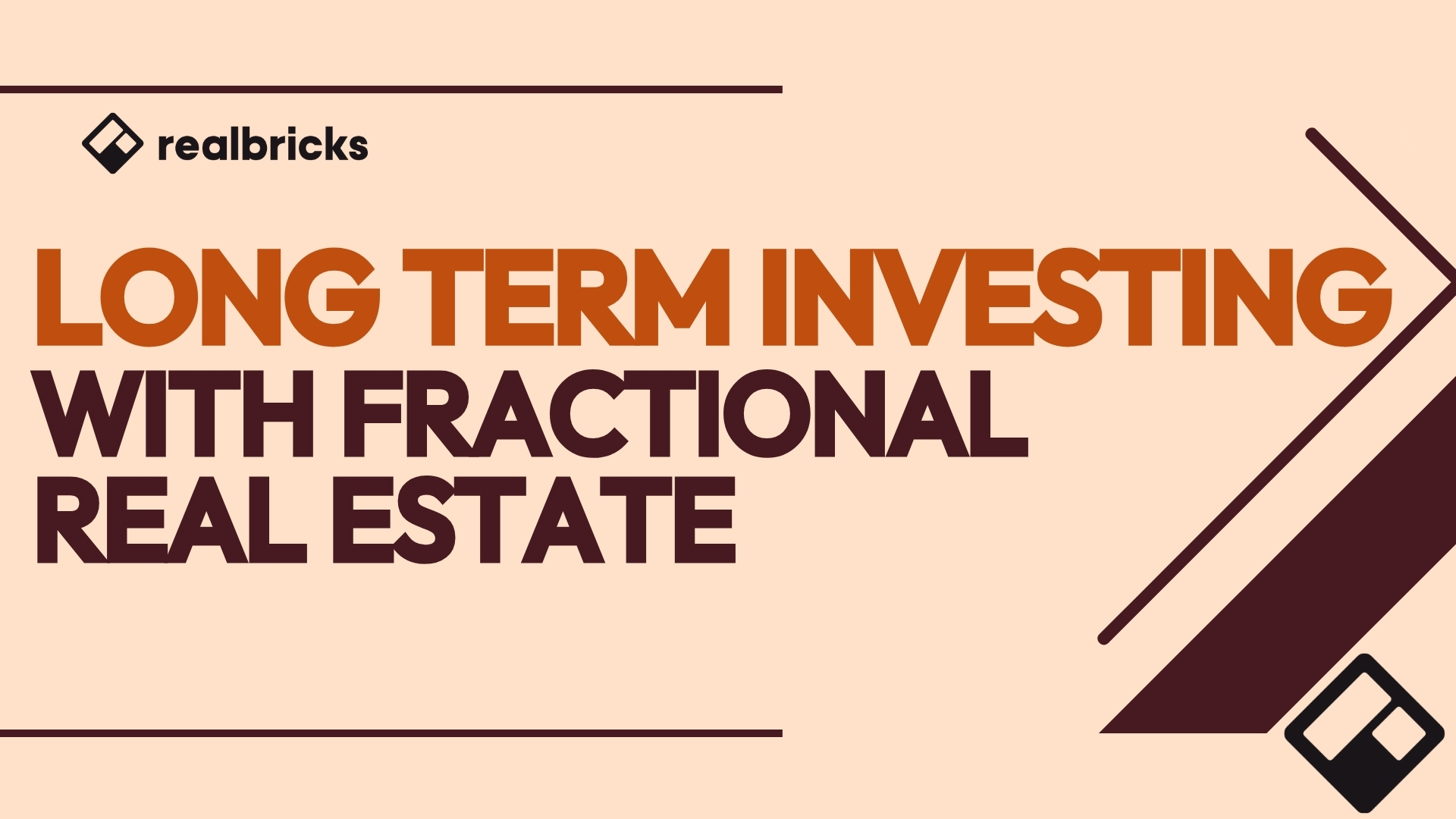Compare crypto, stocks, and real estate by volatility, utility, and long-term stability. Learn how each asset class creates value and the differences investors should understand.

When people talk about investing, three asset classes usually dominate the conversation: crypto, stocks, and real estate. They’ve each created wealth for certain groups of people, but they operate in fundamentally different ways — and not all of them are grounded in real-world value.
If you’re trying to figure out where to put your money, understanding what actually creates long-term, sustainable wealth is essential.
This breakdown cuts through hype, headlines, and speculation to compare these three major asset classes honestly — giving you a clear view of how each one truly works and where their strengths and weaknesses lie.

Crypto has dominated the cultural conversation for years. It’s fast, loud, volatile, exciting — and full of dramatic success stories.
But beneath the excitement lies a structural truth:
Crypto has no intrinsic value or real-world utility by default.
Unlike a business that generates profit or a property that collects rent, crypto produces nothing on its own. Its value depends entirely on what someone else is willing to pay for it.
Warren Buffett said it in the simplest possible way:
"If you owned all the bitcoin in the world and you offered it to me for $25, I wouldn't take it...it isn't going to do anything."
And Charlie Munger, Buffett’s longtime business partner, was even more blunt:
“I think Bitcoin is probably rat poison squared.”
Bill Gates echoed the same concern from a more technical perspective:
“I like investing in things that have valuable output… The value of crypto is only what someone else decides someone else will pay.”
These aren’t emotional reactions — they’re observations from some of the most disciplined and successful investors in modern history.
Yes, it’s true that some companies now accept cryptocurrency as a payment method. But this adoption came after the hype, not because the crypto itself provided unique utility. Businesses don’t accept crypto because it’s indispensable — they accept it because:
And most companies immediately convert crypto back into dollars to avoid volatility.
The crypto isn’t essential to the transaction — it’s simply tolerated.
So crypto prices remain driven mostly by:
A single tweet, rumor, or regulatory headline can send prices soaring or collapsing.
Crypto can create quick riches for a small number of people — but its lack of intrinsic value makes it extremely unreliable as a long-term wealth-building strategy. In many ways, the crypto boom has acted as a public test of blockchain technology itself.
And if the underlying technology were ever adopted on a large scale for payments or fund transfers, chances are governments would create their own centralized digital currencies rather than rely on a decentralized, highly volatile asset they cannot regulate.
If that were to happen, those government-backed digital currencies would almost certainly be tied to existing fiat systems, allowing them to transfer value from traditional currency into a digital version in a controlled and compliant way.
But even this remains pure speculation, and there is no clear reason to believe the underlying technology will ever be adopted in that way.
.jpg)
Stocks occupy a middle ground. They’re tied to real companies, regulated, widely used in retirement accounts, and historically strong over long periods.
However, many people mistakenly believe that stock prices always reflect business performance.
They don’t.
Stock prices are influenced heavily by:
A perfect example is Eli Lilly — a company that has paid uninterrupted dividends since 1885.
It lost more than $15 billion in market value in a single day after a fake tweet claimed “insulin is free now.”
The stock fell about 4.37%, despite nothing about the company actually changing.
That’s how irrational the stock market can be.
Nothing changed fundamentally — just perception.

In 2021, the world watched one of the most irrational stock events in modern history: the GameStop saga

A struggling retail company suddenly skyrocketed from around $17 to over $480 not because of earnings, strategy, or innovation — but because a Reddit community collectively decided to buy it as a joke, a protest, and a meme.
GameStop didn’t transform its business overnight.
Its fundamentals didn’t improve.
There was no breakthrough product.
Its price exploded because:
It was a global reminder that stocks don’t always move on logic or value — they often move on emotion and crowd behavior.
Another concern is P/E ratios (price-to-earnings) — a simple metric showing how much investors are paying relative to how much the company actually earns.
Some of the most respected companies trade at valuations far above their real earnings.
For example, Amazon often trades at 34–36 times its annual earnings.
That means investors are paying $35 today for every $1 the company actually makes.
It can take decades of profits to justify a valuation like that.
This doesn’t make stocks “bad” — but it highlights how deeply they rely on speculation and sentiment, not just fundamentals.

Real estate stands apart from crypto and stocks for one simple reason:
Real estate provides three things investors can count on:
A home or building has physical, economic, and functional worth.
People need places to live.
Businesses need places to operate.
Real estate meets essential human and economic needs.
You can see it, touch it, rent it, improve it, leverage it, and use it.
Real estate produces returns through:
This is why institutions, pension funds, and wealthy families consistently hold real estate as a core asset — and why many financial advisors help clients move a portion of their windfall gains from stocks or crypto into real estate. It’s simply a long-standing pattern in how wealth is preserved and stabilized.
Andrew Carnegie — one of the wealthiest men in American history — famously said:
“Ninety percent of all millionaires become so through owning real estate.”
But historically, real estate had one massive barrier:
A typical property might require:
That locked millions of potential investors out of the market.
Even if you understand the benefits of real estate, buying a property is not easy.
It demands:
For most people, it’s overwhelming — even though they know real estate may be the most stable way to build wealth.
That's why fractional ownership has been a game-changer.

Fractional real estate investing allows everyday investors to buy shares of an individual property with a low entry minimum.
This is very different from:
With fractional investing, you’re buying shares directly tied to a specific home.
You benefit from:
This modern model solves real estate’s biggest problem — accessibility.
Fractional real estate is transforming who gets to participate in one of the most reliable wealth-building asset classes in history.
Realbricks is helping lead that evolution by giving everyday people access to the same advantages that institutions and high-net-worth investors have used for decades.
Real estate has always been one of the strongest wealth-building tools in existence — historically stable, backed by intrinsic value, and grounded in real-world utility.
Fractional real estate simply removes the gatekeepers.
It makes the advantages of real estate accessible without the massive down payment, landlord responsibilities, or traditional barriers.
And the future of fractional investing is even more exciting: a modern system that blends the simplicity of stock-market-style trading with the reliability of real-world assets.
When you strip away the noise, each asset class reveals its true nature:
- Crypto is driven by speculation — its value rising and falling on emotion, momentum, and narrative.
- Stocks are influenced by perception — shaped by expectations, sentiment, and the shifting psychology of the market.
Real estate stands apart because it’s rooted in actual, real-world value.
- It’s shelter. It’s utility. It’s tangible.
- It remains steady whether the market is panicking, celebrating, or confused.
The only drawback?
For most of modern history, real estate was difficult to access unless you had significant capital, credit, and the willingness to take on the responsibilities of ownership.
Fractional real estate investing changes that.
It doesn’t replace real estate — it democratizes it.
It makes the most time-tested asset class available in a format that fits the realities of today’s investors, not the gatekeepers of the past.
And that’s where the modern version of real estate investing comes in:
Sign up on Realbricks today and start exploring long-term real estate opportunities with as little as $100.
Disclaimer: Investing in real estate involves risks, including the potential loss of capital. This content is for informational purposes only and is not intended as investment advice. Investors should perform their own research and consult with financial professionals before making investment decisions.
Be the first to know about property launches, portfolio updates, and announcements by subscribing to our newsletter.